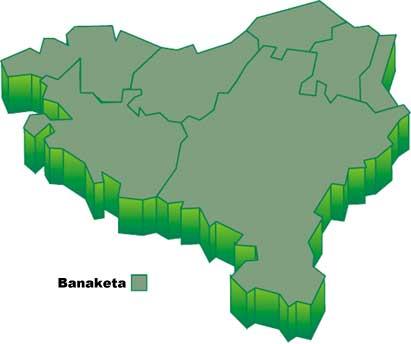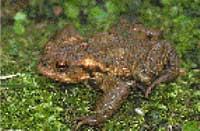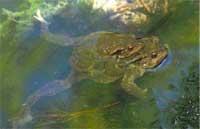Common toad, passionate lover

In the early warm spring days, when the cheerful brooches of birds remember that winter has passed, common toads are directed to wetlands for breeding. Many of them have to travel long distances to reach him and, from time to time, if they have to cross a road, many specimens die on the cars. However, this does not detract and each year, at the same time, they turn blindly towards the place of setting.
In the streams and surroundings you can see many toads: many alone, others by pairs, and more than a lot of toads difficult to know what happens in the dead. Those who are alone are males, while in couples the underlying is female and the superior male, unless there have been errors. If there has been no mistake, we say that on several occasions males who are hot with reproduction, without fixing too much, climb to the back of another male taking this as female. The lower male, however, warns of the impossibility of this equalization through angry “cork, kork, kork”.

The males with the front legs have managed to get hooked to the neck of the female, must push with the hind legs and kick the rest of the males who approach to pair with their partner. But sometimes there are a lot of males who completely surround the poor female to fertilize their eggs.
Days after these days of madness, most toads begin to disappear. A few, exhausted, can be seen in the river almost without force, since they have left everything in reproduction. In the water, however, thousands of eggs that will secure the next generation of toads have been stuck in plants and roots.
The common toad, which is the protagonist of this spectacular reproduction, is a cruel and heavy. It is the largest toad in Europe and although females can be up to 15 cm in length, males will hardly have more than 9-9.5 cm in length. The large and divergent parotoid glands stand out in a wide and solid head. In the eyes of color kupre have a black horizontal pupil. The tubers of the hind legs are normally matched, which differentiates them from other species.
A fairly uniform colour and brown colours predominate. It may also have some scar along the body and usually has the lower part clearer. The skin is full of vikor or warts and has on the back, like most amphibians, two glands that secrete poison. However, this poison has no danger to humans.
The common toad has a locomotion according to its shape. Even with the best jump just rises from the ground and in the face of dangers, the best protection is not to be seen standing. He usually travels at night, is relatively lonely and may have fixed shelters.

In view of the distribution on the map, it can be said that it is not very demanding with the habitat, although it is so different, since it occupies most of the habitats of our region. The strongest populations develop in forests, fields, scrubland and meadows of the humid zone. In the Mediterranean region it will not be present everywhere, but in the most humid and fresh areas. To the south, the toad corridor ( Bufo calamita) is decreasing as it becomes more typical. Here they will appear mostly in the surroundings of rivers, swamps or canals. Due to its adaptability to the habitat, it is a very common species in most European countries and can also be found in several regions of Africa and Asia.
Due to the mild climate of Euskal Herria, common toads can have an activity of almost 12 months. Although the Pyrenees have to spend the winter underground, in the lowest places you can find animals throughout the year.
We could say that the current situation of the species is good. In the Cantabrian side, river pollution can be the most serious problem, but in the small streams that the common toad uses to reproduce there are usually no problems. The disappearance of wetlands and the use of pesticides on the Mediterranean side are the main problems. On the roads throughout the territory, on the other hand, there are massacres of toads that will reproduce and some “black spots” should be studied to make steps for these amphibians.
The reproductive heat or tenor can be given in several months depending on the river basin, but the maximums are given towards March-April. Each female lays between 1,000 and 5,000 eggs in two long rows, while the male on top will germinate. They fall into the water and the eggs get stuck in the vegetation and swell with water. At two weeks black desserts are born. These 25-28 mm long larvae feed on dead animals and underwater plants. Despite its simplicity of work, the canecillos of the common toad can be separated from others: the mouth has a width equal to the distance between the eyes and the end of the tail is round. On the other hand, the left spiral moves directly backwards. By the end of summer, once the metamorphosis is done, they will become hooves 10-18 mm in length. It has a survival of more than 10 years.

The toad has a long and conflictive tongue able to catch all kinds of invertebrates. In turn, this favorite hunter has many enemies and has invented a series of strange behaviors in the belly of predators not to finish. Among other things, they can inflate your body with air and stretch the hind legs that have collected put them upright to explain bigger than it is. However, they are often insufficient and the common toad, and their eggs and larvae are the usual dish of many other vertebrates.
Finally, I would like to mention some belief about this animal and deny it. In our small town we believed that this toad could throw poison with saliva and burn the eyes. Unfortunately, there are still people who think so. Their appearance and fame do no favor to the poor toad. Sometimes it seems that you can not protect animals that do not look friendly...
Species: Bufo family: |





